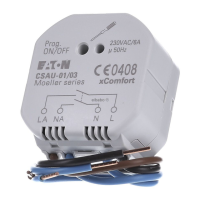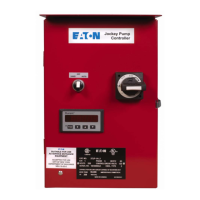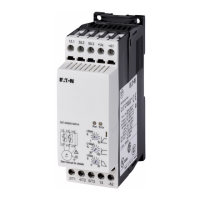1 Description of the Modular PLCs XControl: XC-104-…, XC-204-…, XC-303-…
1.6 Functionality
Modular PLCs XControl: XC-104-…, XC-204-…, XC-303-… 01/23 MN050005EN Eaton.com 29
Reaction of the station on the CAN bus
Station/bus monitoring: CAN telegrams are sent and received directly by the
user program. An interruption on the CAN Bus will only be recognized when
the respective CAN slave is monitored by the PLC (Nodeguarding function).
Start/Stop behavior:
Can be configured with the application.
• Reset to default value (usually "
0")
• The current value is maintained (user-specific)
Switch on voltage:
The order in which you switch on the power supply of the individual CAN sta-
tions has no effect on the functioning of the CAN bus. Depending on the
parameters set, the controller “waits” for stations that are not present or
starts them when the station is connected to the CAN net.
Communication with CAN stations:
The following documents describe the communication with the CAN stations
and their configuration:
• XSOFT-CODESYS-3 manufacturer documentation, online help
Library description: CANUser.lib/CANUser_Master.lib
• Field bus support -> CAN-based field buses
• CANopen -> CANopen Manager (Master)
• Documentation for the CAN modules used
An LED green blinking next to the X4 or X5 plug connector (whichever is in
use) will indicate when data is being transferred on the CAN bus. → Section
“3.6 LED indicators”, page 63.
250 250 m ² ³ It may be necessary to use repeaters starting
from a cable length of 1000 m
500
100 m
800 50 m
1,000 25 m
→
If an application attempts to activate an unsupported baud rate,
the CAN controller will switch to passive mode.
See also:
•Functionality → Page 18
• Device Interface → Page 21
• Technical data → Page 172
CAN baud rates
[kbauds]
Maximum possible cable length

